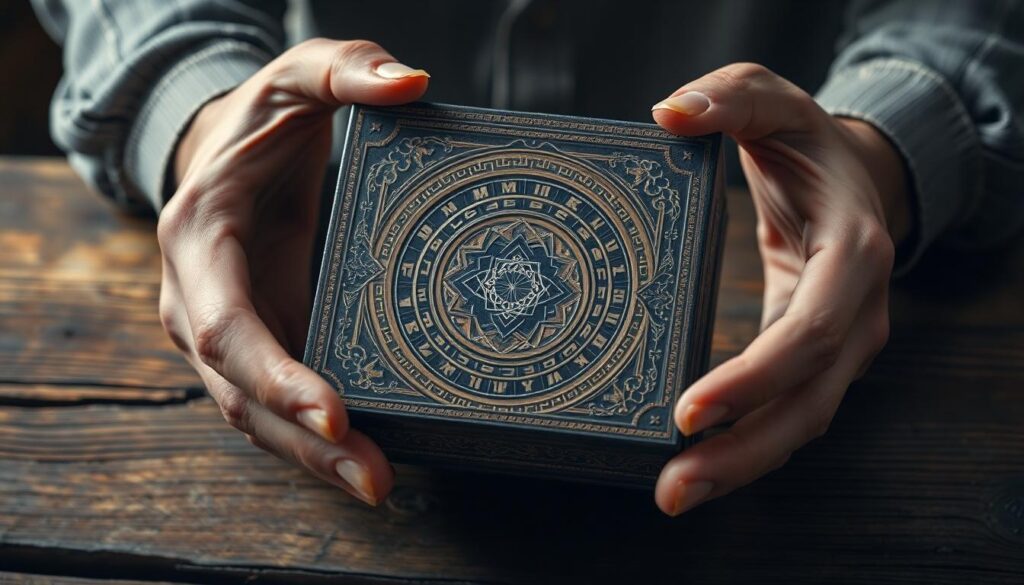Ever been captivated by a puzzle that seems impossible to crack? Mysterious riddles have fascinated humanity for centuries, challenging our minds and pushing the boundaries of our logical thinking. From ancient Egyptian hieroglyphs to modern-day escape rooms, these brain teasers continue to intrigue us with their clever wordplay and hidden meanings.
We’ve gathered some of the most perplexing riddles that have stumped even the brightest minds. Whether you’re looking to sharpen your problem-solving skills or simply enjoy the satisfaction of unraveling a complex mystery, you’re in the right place. These mind-bending enigmas will test your creativity, lateral thinking, and ability to see beyond the obvious.
10 Mind-Bending Mysterious Riddles That Will Challenge Your Logic
- The Always Correct Clock
This peculiar clock is always right twice a day, yet it never keeps the correct time. What type of clock is it? A stopped clock shows the exact time twice daily because even though it’s not functioning, the correct time will match its frozen display exactly twice in a 24-hour period.
- The Deadly Dinner Party
At a dinner party, several guests fell ill after eating, but one remained perfectly healthy even though having the same food. The difference? The survivor ate everything everyone else ate but didn’t consume the ice cubes in their drink. The poison was in the ice, which had melted in the others’ drinks.
- The Abandoned Hotel Room
A woman walks into a hotel room and immediately knows her husband has been murdered. The room appears untouched with no body present. How did she know? She noticed their shared travel ritual was disrupted—her husband always turned on the shower first thing when entering a hotel room, and the bathroom was bone dry.
- The Silent Prison
Four walls surround you completely, with no windows or doors. How do you escape? The answer lies in recognizing you’re trapped in a metaphorical prison—you’re inside a map, and you can simply fold it up and walk away.
- The Impossible Book
You discover an ancient book that perfectly predicts your entire life, including the exact moment you found the book itself. The final page describes how you’ll die tomorrow. Can you change your fate? The riddle challenges determinism versus free will—the book’s accuracy depends on your belief in its power.
- The Deadly Rain
When it rains, people die. Yet without rain, many more perish. What is this rain? The answer is bullets—they “rain” down in battle causing death, but without military defense, more civilians would potentially die from invasion.
- The Blind Witness
A blind man witnessed a murder and identified the killer. How is this possible? The word “witnessed” tricks you—the blind man heard the crime occur and recognized the murderer’s voice, proving that witnessing doesn’t require sight.
- The Impossible Map
You possess a map that shows where all buried treasure in the industry is located. Why can’t you become rich? Maps show locations but not depths—the treasures might be buried miles underground or under modern structures, making retrieval practically impossible even though knowing where they are.
- The Empty Room Murder
A man was found dead in a completely empty, locked room with a small puddle of water nearby. How did he die? The murderer used an icicle as the weapon, which melted after the crime, leaving only the mysterious puddle as evidence.
- The Inescapable Island
You’re stranded on an island that will sink in exactly three days. The island is surrounded by sharks, and the nearest land is 100 miles away. How do you survive? The riddle’s solution requires lateral thinking—you wait until “tomorrow” never comes because “tomorrow” is always a day away, meaning the island will never actually sink in three days.
The Ancient Sphinx Riddle: History’s Most Famous Brain Teaser
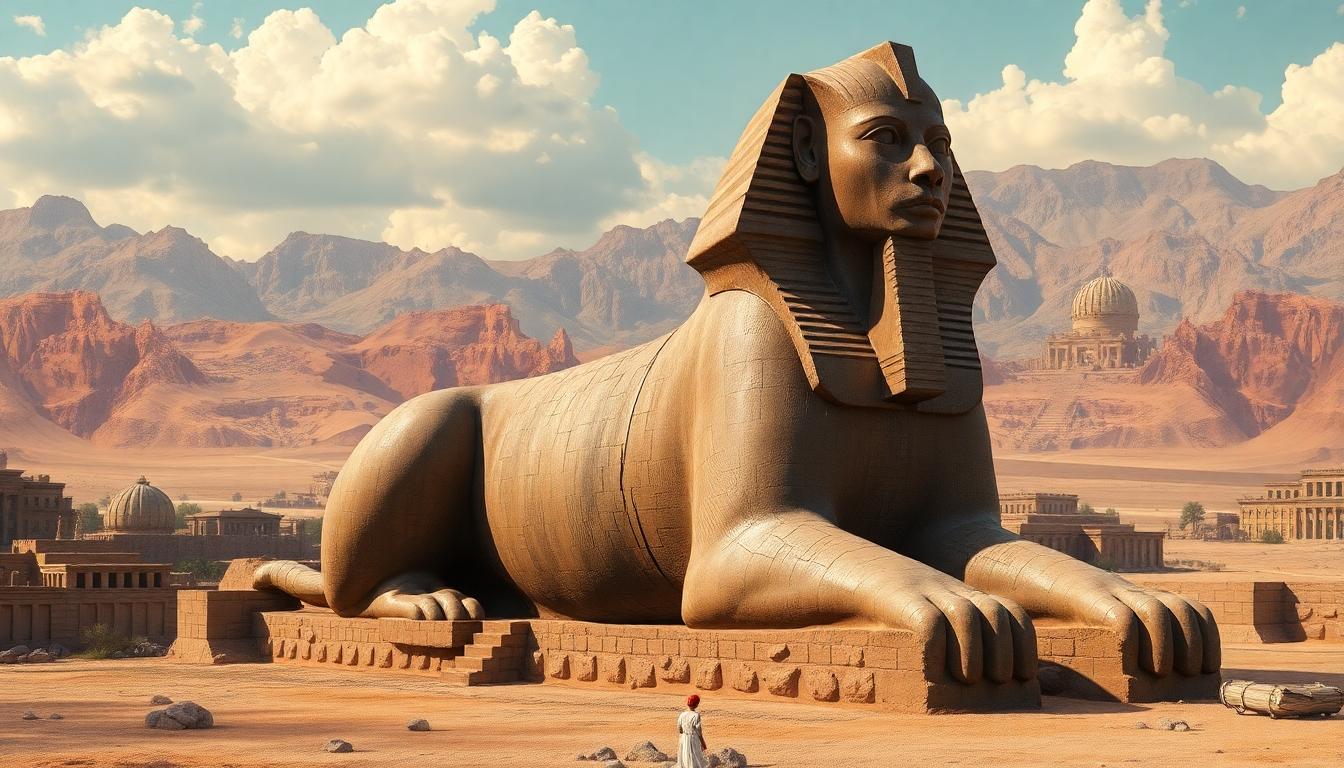
When we discover the area of mysterious riddles, none stands more prominent in history than the infamous Sphinx Riddle from Greek mythology. This ancient brain teaser has captivated minds for centuries and remains one of the most recognized puzzles in human history.
The Original Question That Stumped Many
The Sphinx, a fearsome creature with a lion’s body and a woman’s face, guarded the entrance to the city of Thebes, challenging all travelers with her deadly riddle. Those who failed to solve it met a grim fate—they were devoured by the monster without mercy. Her question came in two famous formulations: “What being has four legs, then two, and then three?” or alternatively, “What has four legs in the morning, two at noon, and three in the evening?” The riddle’s poetic structure used the times of day as metaphors, adding another layer of complexity that confounded countless victims. Many brave souls attempted to answer the Sphinx’s question, but their failures only added to the growing legend of the unsolvable puzzle. The gods themselves had sent this creature as punishment, making the stakes for solving her riddle extraordinarily high.
How Oedipus Solved the Impossible Challenge
Oedipus, a young prince fleeing his homeland of Corinth, encountered the dreaded Sphinx during his travels. Unlike those before him, Oedipus approached the challenge with remarkable insight and analytical thinking. He correctly answered that the being in question was “man,” explaining that humans crawl on all fours as babies (morning of life), walk upright on two legs as adults (noon), and rely on a walking stick as a third leg in old age (evening). This brilliant interpretation demonstrated Oedipus’s exceptional understanding of the human condition and life cycle. The Sphinx, stunned by his correct answer, fulfilled the prophecy by throwing herself off a cliff in defeat, so ending her reign of terror over Thebes. King Creon had promised that whoever solved the riddle would gain both the kingdom and the hand of his sister Jocasta in marriage—a reward that Oedipus claimed, unwittingly setting in motion his own tragic fate. The solution to this ancient riddle reminds us that sometimes the most profound puzzles have answers hidden in plain sight, reflecting the universal human experience.
Unsolved Mysterious Riddles From Ancient Civilizations
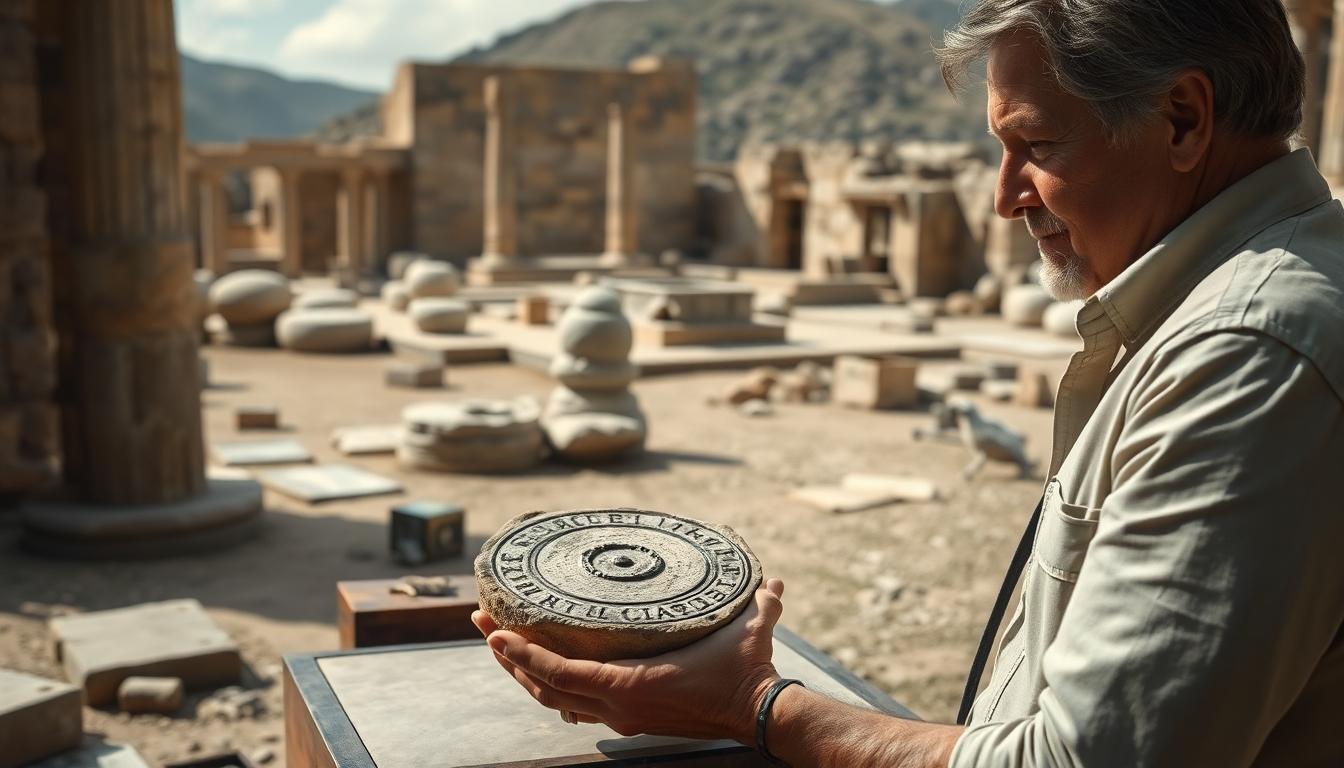
Ancient civilizations left behind many enigmatic puzzles that continue to baffle modern researchers and archaeologists. These mysterious riddles offer fascinating glimpses into lost knowledge while challenging our understanding of human history.
The Phaistos Disc: A Bronze Age Puzzle
The Phaistos Disc remains one of archaeology’s most perplexing artifacts since its discovery in 1908 at a Minoan palace site on Crete. This remarkable clay disc features 241 stamped tokens representing 45 unique signs, including various logograms, phonetic symbols, and pictograms arranged in an intriguing spiral pattern. Even though decades of scholarly analysis, the true meaning and purpose of this Bronze Age artifact continue to elude experts. The disc represents one of humanity’s earliest known forms of written communication, yet its language defies decipherment, leaving us to wonder what ancient wisdom or knowledge might be encoded in its mysterious symbols.
The Voynich Manuscript’s Cryptic Language
Carbon-dated to the early 15th century, the Voynich Manuscript emerged into public awareness when Wilfrid Voynich discovered it in 1912. This enigmatic codex contains bizarre illustrations of unidentifiable plants, astronomical diagrams, and peculiar human figures accompanied by text written in an entirely unknown script and language. Cryptographers, linguists, and historians have spent over a century attempting to crack its code without success. The manuscript’s mysterious contents have sparked countless theories about its origins and purpose, ranging from an elaborate hoax to a legitimate record of forgotten knowledge. Many scholars consider it one of history’s most challenging unsolved codes, continuing to resist even the most sophisticated modern decryption methods.
Beyond these well-documented mysteries, ancient civilizations left other puzzling riddles. The Maya, renowned for their astronomical and mathematical prowess, inexplicably abandoned their thriving cities between the 9th and 10th centuries. This sudden disappearance has generated many theories, from environmental catastrophes to political instability. Similarly, the Lost Colony of Roanoke presents another historical enigma where English settlers vanished without explanation in 1587, leaving only the cryptic word “Croatoan” carved into a tree as their final message.
Mathematical Mysterious Riddles That Confounded Experts

Fermat’s Last Theorem: A 358-Year Mystery
Fermat’s Last Theorem stands as one of mathematics’ most enduring puzzles, stumping brilliant minds for over three centuries. Pierre de Fermat proposed this deceptively simple theorem in 1637, claiming that no positive integers x, y, and z could satisfy the equation x^n + y^n = z^n for any integer n greater than 2. What made this particularly tantalizing was Fermat’s marginal note claiming he had “a truly marvelous proof” that wouldn’t fit in the margin. Generations of mathematicians tackled exact cases, successfully proving the theorem for n = 3, 5, and 7, but a comprehensive proof remained elusive until 1994. Andrew Wiles finally cracked this mathematical enigma after a seven-year search that began in 1986, initially presenting a flawed proof in 1993 before correcting it the following year. His breakthrough ended the 358-year search, representing one of mathematics’ greatest achievements.
The Collatz Conjecture: Deceptively Simple Yet Unsolved
The Collatz Conjecture presents a mathematical riddle so straightforward a child can understand it, yet so complex it continues to baffle experts. This tantalizing problem, also known as the 3x+1 problem, involves a simple set of rules: take any positive integer, if it’s even, divide by 2; if it’s odd, multiply by 3 and add 1, then repeat the process. The conjecture claims that regardless of your starting number, you’ll eventually reach 1. Computers have verified this pattern for numbers exceeding 10^20, yet a formal mathematical proof remains out of reach. Mathematicians have tested countless approaches to solve this seemingly simple problem, but the Collatz Conjecture stubbornly resists resolution, highlighting how even elementary-looking mathematical questions can harbor profound complexity. Even though extensive computational evidence supporting its truth, this riddle continues to challenge the limits of mathematical understanding.
Modern Murder Mystery Riddles That Test Your Detective Skills
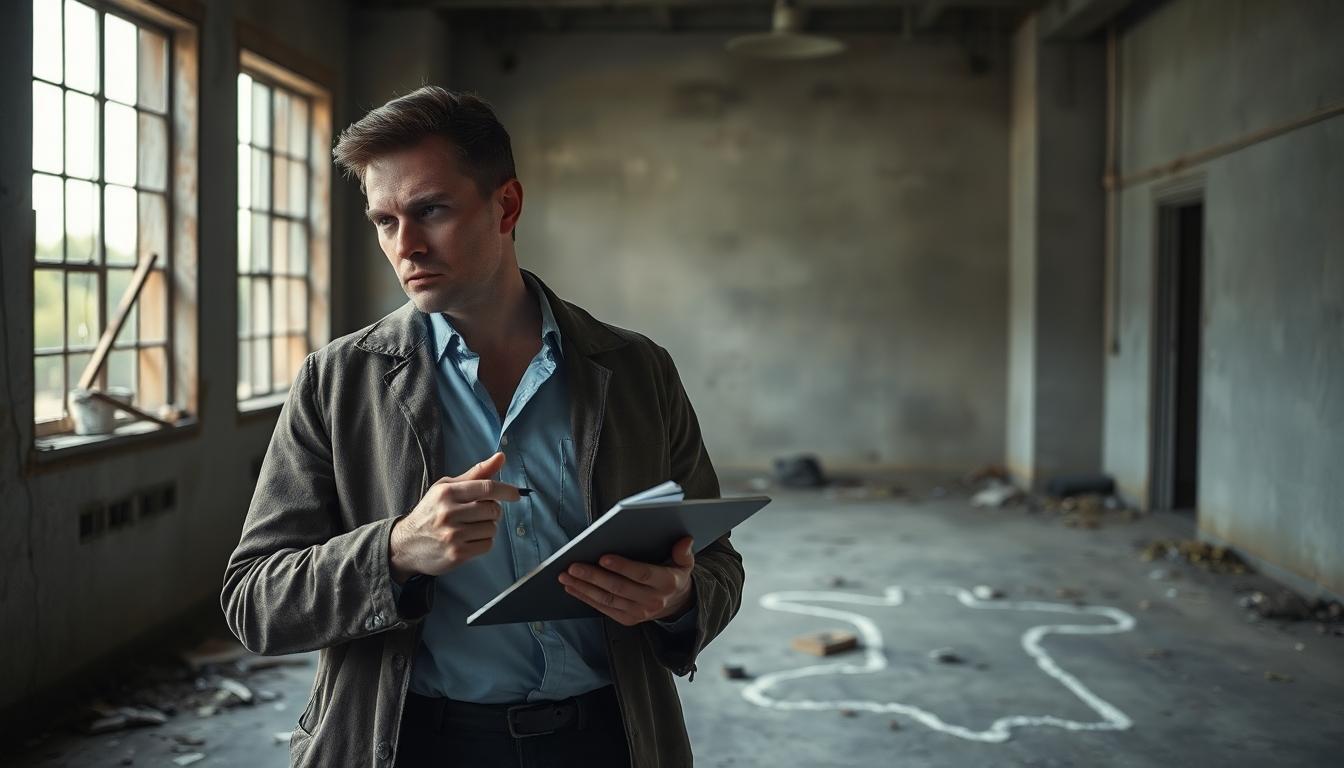
Modern murder mystery riddles combine elements of forensic science, logical deduction, and clever misdirection to create brain-teasers that challenge your inner detective. Let’s explore some intriguing cases that will put your sleuthing skills to the test.
The Abandoned Building Case
In this compelling mystery, a detective successfully proves that a presumed suicide was actually murder through an ingenious test. The investigator methodically examines each floor of the building by lighting a cigarette, tossing it from the window, and observing where it lands in relation to the body’s position. Their analysis reveals a crucial inconsistency—the building’s windows (except on the ground floor) wouldn’t allow for a fall that could cause fatal injuries. This observation leads to the conclusion that the body must have been deliberately placed at the scene, transforming what appeared to be a suicide into a calculated murder.
The Halloween Deer Ambush
This tragic riddle involves a boy and girl who dress as deer for Halloween festivities. Their realistic costumes lead to a fatal mistake when hunters encounter them in the woods and mistake them for actual animals. The hunters, unable to distinguish between the costumed children and real deer, shoot them in what becomes a devastating case of mistaken identity. This riddle highlights how circumstances and appearances can create deadly misunderstandings.
The Vanishing Necklace Heist
During an exclusive museum gala, a valuable necklace mysteriously disappears from its display. The clever thief, Diana, uses gloves to prevent leaving fingerprints and executes her plan when Sarah’s photograph temporarily blocks the security camera’s view of the display case. Diana’s early departure from the event raises suspicion and points to her guilt in this sophisticated heist. The case demonstrates how opportunity, preparation, and timing are essential elements in solving complex theft mysteries.
The Classic River Crossing Conundrum
This timeless logical puzzle presents a farmer who must transport a wolf, a goat, and a cabbage across a river using a boat that can only carry one item at a time. The challenge lies in the natural predator-prey relationship: if left unattended, the wolf will eat the goat, or the goat will consume the cabbage. The solution requires strategic planning through six key steps:
- Take the goat across first
- Return to the starting bank alone
- Transport either the wolf or cabbage next
- Bring the goat back to the original side
- Leave the goat and take the remaining item (wolf or cabbage) across
- Make a final trip to retrieve the goat
This puzzle tests our ability to think several moves ahead while managing competing constraints.
The Poisoned Wine Dilemma
In this fascinating logical challenge, one bottle among 1,000 contains poisoned wine that must be identified with minimal testing. The solution employs binary code principles by assigning numbers to each bottle and designating exact tasters to each binary digit position. After the tasting session, observers simply need to wait 24 hours and note which tasters have died. The unique pattern of fatalities directly corresponds to the binary representation of the poisoned bottle’s number. This riddle brilliantly demonstrates how mathematical concepts can be applied to solve seemingly impossible detection problems with remarkable efficiency.
Mysterious Riddles Hidden in Famous Artworks
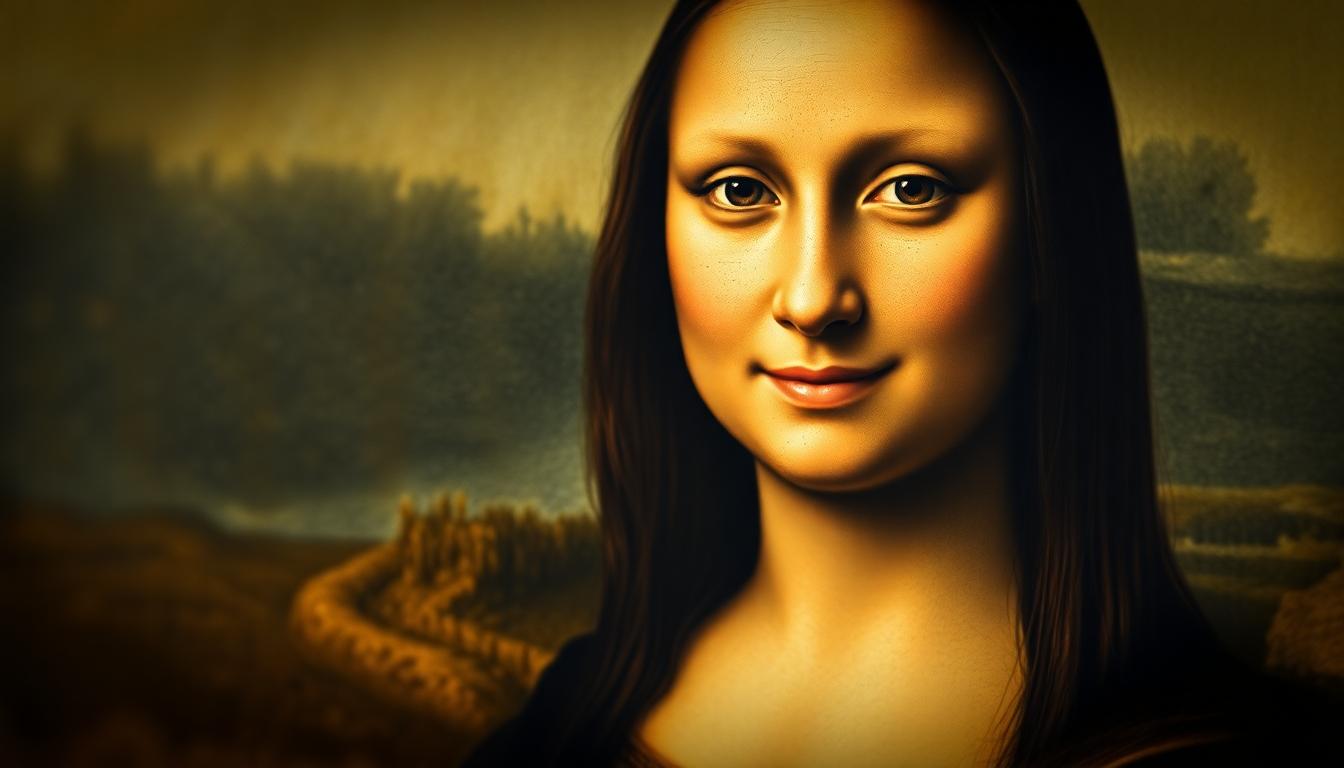
Art has always been a medium for communication, sometimes hiding secrets in plain sight. Throughout history, masterful artists have embedded codes, symbols, and messages within their works that continue to intrigue scholars and art enthusiasts alike.
Da Vinci’s Secret Codes and Symbols
Leonardo da Vinci stands as perhaps the most renowned artist associated with hidden symbolism and cryptic messages. His masterpiece The Mona Lisa contains subtle elements that have sparked decades of speculation and analysis. Art historians focus not only on potential hidden symbols but also on Da Vinci’s revolutionary painting techniques that created the enigmatic smile that seems to change depending on viewing angle. Some theories suggest the painting might even contain elements of self-portraiture, adding another layer to its mystery.
The Last Supper represents Da Vinci’s most symbolically rich work, carefully designed to convey multiple levels of meaning. Every element in this iconic painting serves a purpose, from the positioning of the apostles to the items on the table. The composition intentionally teaches religious and moral themes through visual storytelling, exemplifying Renaissance artistic practices. Da Vinci meticulously arranged each figure and object to communicate exact messages that contemporary viewers would have recognized and understood within their cultural context.
The Enigmatic Messages in Hieronymus Bosch Paintings
Hieronymus Bosch created some of history’s most bewildering and symbolically complex artworks. His triptych The Garden of Earthly Delights presents viewers with a fantastical industry populated by bizarre creatures, strange structures, and surreal scenarios that defy straightforward interpretation. Each panel progresses from Paradise to earthly pleasures to a nightmarish hell, filled with symbols that simultaneously fascinate and perplex modern audiences.
Bosch’s cryptic visual language employs creatures and motifs that often generate more questions than answers. His works function as elaborate visual puzzles that continue to challenge art historians’ interpretations centuries after their creation. The ambiguity of Bosch’s symbolism invites endless speculation about religious warnings, alchemical processes, and esoteric knowledge potentially hidden within his paintings. This deliberate complexity ensures his artworks remain perpetually relevant and mysterious, as each generation discovers new ways to interpret their enigmatic imagery.
Mind-Warping Lateral Thinking Riddles

Lateral thinking riddles challenge us to think outside conventional logic and embrace unexpected answers. These brain teasers often present seemingly impossible scenarios that require creative approaches to solve.
The Man in the Bar Puzzle
A man walks into a bar and asks the bartender for a glass of water. Instead of serving water, the bartender pulls out a gun and points it at the man. The man says “Thank you” and walks out. This perplexing scenario makes perfect sense when you discover the solution: the man had hiccups, and the bartender’s shocking action effectively cured him by triggering his fight-or-flight response. The sudden fright eliminated his hiccups instantly, rendering the water unnecessary.
The Man in the Elevator Puzzle
A peculiar pattern emerges when observing a certain man’s elevator behavior. He enters his apartment building’s elevator each morning, presses the button for the 10th floor even though living on the 21st floor, and walks up the remaining eleven flights of stairs. Curiously, when it rains or when someone else is in the elevator with him, he presses 21 and rides directly to his floor. The solution reveals a physical limitation—the man is too short to reach the 21st floor button without assistance or something to stand on. Rain provides him an umbrella to use for reaching higher buttons, while the presence of others allows him to ask for help.
The Hotel Room Mystery
Three people check into a hotel room that costs $30. They each contribute $10 and head to their room. Later, the manager realizes the room should only cost $25, so he sends a bellhop to return $5 to the guests. The dishonest bellhop pockets $2 and returns only $1 to each guest. Now each guest has paid $9 ($10 – $1), totaling $27, plus the bellhop’s $2 equals $29. Where did the other dollar go? The puzzle’s brilliance lies in its misleading arithmetic. The correct calculation should be: $25 (actual room cost) + $3 (returned to guests) + $2 (bellhop’s theft) = $30, which aligns perfectly with the original amount paid.
Three Switches, One Light Bulb
You’re standing in a hallway with three light switches, one of which controls a light bulb in a closed room upstairs. Your challenge is to determine which switch controls the bulb using only one trip to the upstairs room. The clever solution involves using heat as a clue: turn the first switch on for five minutes, then turn it off. Next, turn on the second switch and immediately go upstairs. If the bulb is illuminated, the second switch controls it. If the bulb is off but warm to the touch, the first switch is responsible. If the bulb is off and cool, the third switch must control it.
A Couple in a Ballroom
A couple enters a ballroom and discovers many dead people lying on the floor, yet no crime has been committed. This seemingly horrific scene becomes clear when you realize the couple are scuba divers exploring a sunken ship. The “ballroom” is underwater, and the “dead people” are casualties from when the ship sank. This riddle perfectly demonstrates how lateral thinking often requires us to completely reframe our initial assumptions about the setting and context.
A Man’s Death by Door
A man simply walks through a door and dies. Without additional context, this scenario seems bizarre, but several plausible explanations exist. The man might have walked through an airplane door at high altitude, instantly causing fatal decompression. Alternatively, he could have entered a lion’s cage at a zoo, or perhaps he opened the door to a prison cell housing a violent inmate. Each solution highlights how seemingly simple actions can have deadly consequences in exact contexts.
Mysterious Riddles in Popular Culture and Literature
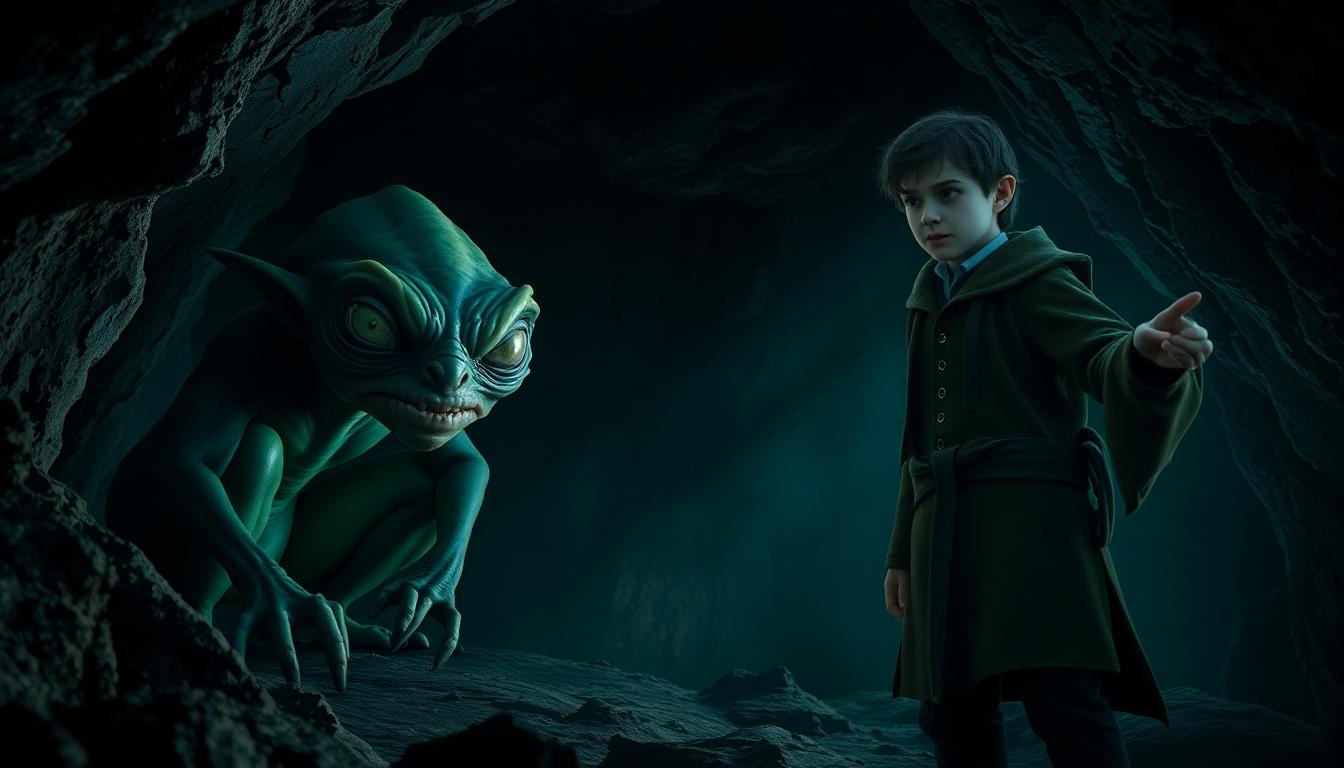
The Hobbit’s Legendary Riddle Battle
J.R.R. Tolkien’s classic novel “The Hobbit” features one of literature’s most memorable riddle contests when Bilbo Baggins faces off against the creature Gollum. This intense battle of wits serves as a pivotal plot point, determining whether Bilbo will become Gollum’s next meal or gain his freedom. Tolkien crafted ingenious riddles that showcase both characters’ intelligence, including the famous mountain riddle: “What has roots as nobody sees, is taller than trees, up, up it goes, and yet it never grows?” Another standout example asks: “What walks on four legs in the morning, two legs at noon, and three legs in the evening?” These clever word puzzles not only advance the storyline but also demonstrate how riddles can create tension and reveal character traits through intellectual challenges.
Mysterious Riddles in Detective Novels
Detective fiction thrives on mysterious riddles that form the backbone of their narratives, challenging both protagonists and readers to solve complex puzzles. Authors frequently incorporate cryptic clues, enigmatic statements, and seemingly disconnected elements to construct elaborate mysteries that unfold throughout the story. Many detective novels present readers with newspaper clippings, suspicious circumstances, or peculiar observations that must be pieced together to identify the culprit. Popular examples include the “mailman mystery” and the “chemist’s death” cases where subtle details lead to the revelation of the killer’s identity. Mystery novels by renowned authors like Stephen King often intertwine supernatural elements with traditional detective work, while series such as Lockwood & Co. place mysterious events at the center of their plots. These literary riddles engage readers by inviting them to participate actively in solving the mystery alongside the fictional detectives, creating an interactive and intellectually stimulating reading experience.
Online Mysterious Riddles and ARGs That Captivated the Internet
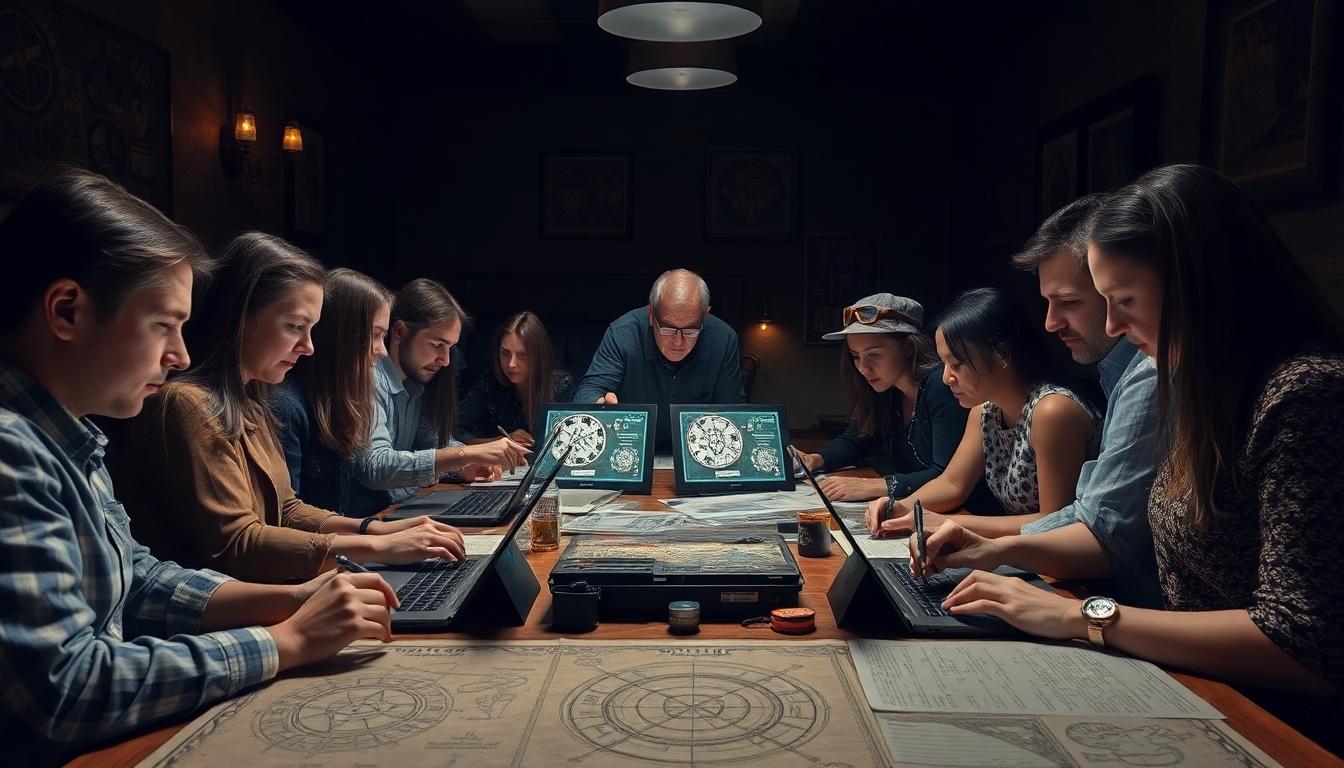
Cicada 3301: The Ultimate Internet Mystery
Cicada 3301 emerged in 2012 as one of the internet’s most perplexing enigmas, creating a worldwide sensation among puzzle enthusiasts. This shadowy organization released a series of incredibly complex challenges that combined cryptography, steganography, data security, and esoteric knowledge. Participants found themselves decoding hidden messages in images, translating ancient runes, and even traveling to physical locations around the globe to find clues. The purpose behind these elaborate tests remains unknown, though many speculate they were designed to recruit highly skilled individuals for an undisclosed organization. Even though several rounds of puzzles occurring between 2012 and 2014, Cicada 3301’s ultimate goals and identity continue to elude even the most dedicated internet sleuths, cementing its reputation as the ultimate internet mystery.
The Mysterious Reddit Riddles Phenomenon
Reddit has become a thriving hub for mysterious riddles and collaborative puzzle-solving, creating entire communities dedicated to unraveling complex enigmas. Subreddits like r/riddles and r/AskReddit regularly host challenging brain teasers that captivate thousands of users who work together to find answers. These online communities have fostered a unique culture where anonymous users pool their diverse knowledge and skills to tackle problems that would be nearly impossible to solve individually. Alternative Reality Games (ARGs) frequently use Reddit as a platform to distribute clues, creating immersive experiences that blur the line between digital puzzles and real-industry exploration. Many viral riddles have originated on Reddit, including deceptively simple questions with surprising answers such as “What is always on its way but never arrives?” (tomorrow) or the more complex “Two girls were born to the same mother, on the same day, at the same time, in the same month and year, and yet they’re not twins. How can this be?” (they’re part of triplets). The platform’s collaborative nature has transformed solo puzzle-solving into a community event, demonstrating how mysterious riddles can unite internet strangers around a common intellectual challenge.
How to Craft Your Own Mysterious Riddles

After exploring so many captivating riddles, you might feel inspired to create your own mysterious puzzles. Crafting an effective riddle requires balancing difficulty with solvability to create an captivating mental challenge.
Elements That Make a Riddle Truly Captivating
Every memorable riddle contains exact elements that make it stand out from the ordinary. A clear theme provides essential context and direction for your riddle, giving solvers a framework to work within. Your riddle must lead to an answer that feels definitive and satisfying once discovered, though the path to that solution should require mental effort.
Clever wordplay serves as the foundation of truly captivating riddles, utilizing double meanings, homophones, or onomatopoeia to create layers of complexity. We’ve found that incorporating your riddle into a broader narrative or story significantly enhances engagement, allowing solvers to connect emotionally with the puzzle. This storytelling approach transforms a simple question into an immersive experience, keeping solvers invested until they reach the solution.
Steps to Creating a Challenging Yet Solvable Mystery
Begin your riddle-crafting process by deciding on the answer first. Starting with the solution provides a clear target and helps maintain focus throughout the creation process. Next, brainstorm words, concepts, and characteristics associated with your chosen answer to build a vocabulary foundation for your riddle.
Use your gathered associated words to construct the actual riddle, carefully balancing cryptic language with sufficient clues. Avoid writing riddles that are either too straightforward or impossibly obscure. Testing your creation with others offers valuable feedback on difficulty level and clarity.
Consider integrating your riddle into a larger mystery framework or narrative for added depth. This approach works particularly well when creating themed puzzles like those found in Egyptian mythology scenarios or murder mysteries. For example, a clock-themed riddle might read: “I wave my hands on your hand, day and night, If I wave too slow, I’ll soon be put right.” The solution becomes accessible through careful consideration while remaining challenging enough to provide satisfaction when solved.
Conclusion: Why Mysterious Riddles Endure Through the Ages
Mysterious riddles continue to captivate us because they tap into our innate desire to solve the seemingly unsolvable. From ancient sphinxes to modern online communities they challenge our minds in ways few other intellectual pursuits can match.
We’ve explored riddles across art history mathematics literature and digital platforms showing how they’ve evolved while maintaining their essential appeal. They’re not merely games but windows into human creativity and problem-solving abilities.
The next time you encounter a perplexing puzzle remember you’re participating in a tradition that spans millennia. Whether creating your own riddles or tackling those crafted by others you’re keeping alive one of humanity’s most enduring intellectual traditions – the art of mystery.
Frequently Asked Questions
What is the historical significance of riddles and puzzles?
Riddles and puzzles have fascinated humanity throughout history, from ancient Egyptian hieroglyphs to modern escape rooms. They’ve served as cultural tools for teaching logical thinking and problem-solving skills across civilizations. These mental challenges have been used to test wisdom, preserve knowledge, and entertain people for thousands of years, demonstrating our enduring attraction to solving complex mysteries.
What was the Sphinx Riddle and why is it famous?
The Sphinx Riddle from Greek mythology asked: “What has four legs in the morning, two at noon, and three in the evening?” Travelers who failed to answer were killed. Oedipus solved it by answering “a human,” who crawls as a baby, walks upright as an adult, and uses a cane in old age. This riddle is famous for its metaphorical language and its central role in the tragic myth of Oedipus.
What are some unsolved ancient riddles that still baffle experts?
Several ancient mysteries remain unsolved, including the Phaistos Disc (a Bronze Age artifact with 241 undeciphered tokens), the Voynich Manuscript (a 15th-century codex written in an unknown script), the Maya civilization’s sudden collapse, and the disappearance of Roanoke Colony. These enigmas continue to challenge our understanding of human history and demonstrate the limits of modern knowledge.
How did Fermat’s Last Theorem challenge mathematicians?
Fermat’s Last Theorem, proposed in 1637, stated that no three positive integers a, b, and c can satisfy the equation aⁿ + bⁿ = cⁿ for any integer value of n greater than 2. Fermat claimed to have a proof but never wrote it down. This seemingly simple statement baffled the greatest mathematical minds for 358 years until Andrew Wiles finally proved it in 1994, highlighting how deceptively complex mathematical riddles can be.
How do artists hide riddles in their paintings?
Artists like Leonardo da Vinci embedded codes and symbols within masterpieces such as The Mona Lisa and The Last Supper. These hidden elements include mathematical proportions, mirror writing, musical notations, and religious symbolism. Similarly, Hieronymus Bosch filled paintings like The Garden of Earthly Delights with surreal imagery containing moral messages and societal commentary that art historians still debate centuries later.
What is a lateral thinking riddle?
Lateral thinking riddles require creative, non-linear problem-solving approaches. Unlike straightforward logic puzzles, they often involve thinking “outside the box” and challenging assumptions. These riddles frequently present scenarios with seemingly insufficient information, where the solution emerges only when you shift your perspective or recognize misleading contexts. Examples include the Man in the Elevator riddle and puzzles with deliberate misdirection.
How did riddles feature in Tolkien’s “The Hobbit”?
In J.R.R. Tolkien’s “The Hobbit,” a pivotal chapter features Bilbo Baggins engaging in a life-or-death riddle contest with Gollum. This exchange showcases both characters’ cleverness through riddles like “Thirty white horses on a red hill” (teeth) and “A box without hinges, key, or lid, yet golden treasure inside is hid” (egg). The contest ultimately leads to Bilbo obtaining the One Ring, fundamentally changing the course of Middle-earth’s history.
What is Cicada 3301 and why is it significant?
Cicada 3301 is one of the internet’s most mysterious puzzle phenomena, first appearing in 2012. This anonymous organization released incredibly complex challenges involving cryptography, steganography, data security, and esoteric knowledge across physical and digital platforms worldwide. These puzzles required collaboration among skilled enthusiasts and are considered among the most sophisticated online riddles ever created, supposedly designed to recruit highly intelligent individuals.
How do detective novels incorporate riddles?
Detective novels weave riddles throughout their narratives as central plot devices. Authors like Agatha Christie and Arthur Conan Doyle embed cryptic clues, red herrings, and encoded messages that challenge both protagonists and readers. These literary puzzles create an interactive experience where readers mentally compete to solve the mystery before the detective reveals the solution, adding an intellectual dimension to the storytelling.
What makes a good mysterious riddle?
A compelling mysterious riddle balances challenge with solvability. It should contain precise clues that lead to a logical solution without being too obvious or impossibly obscure. Effective riddles often incorporate clever wordplay, misdirection, metaphors, or double meanings while maintaining internal consistency. The best riddles provide an “aha moment” when solved, delivering intellectual satisfaction and making the solver feel rewarded for their mental effort.

